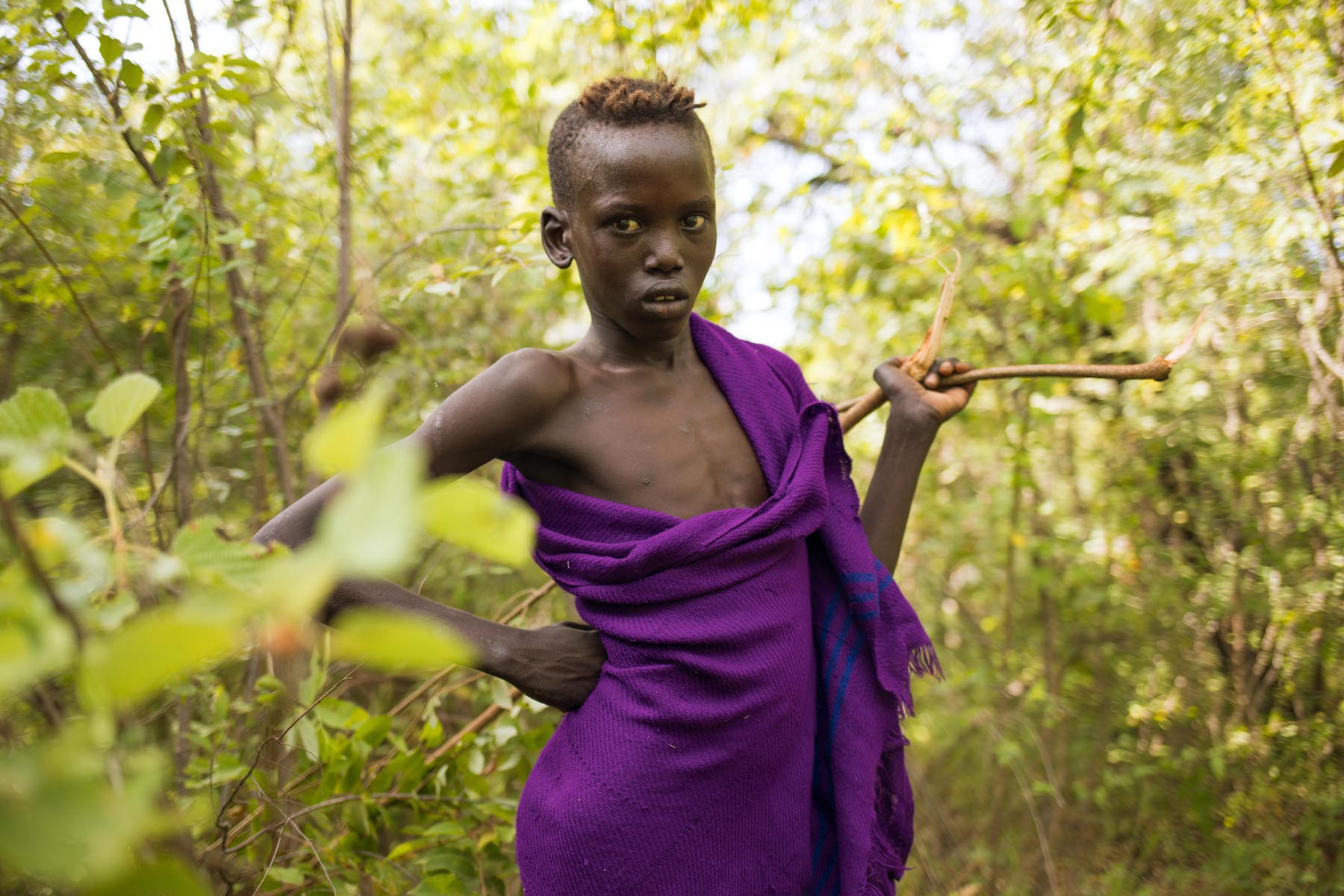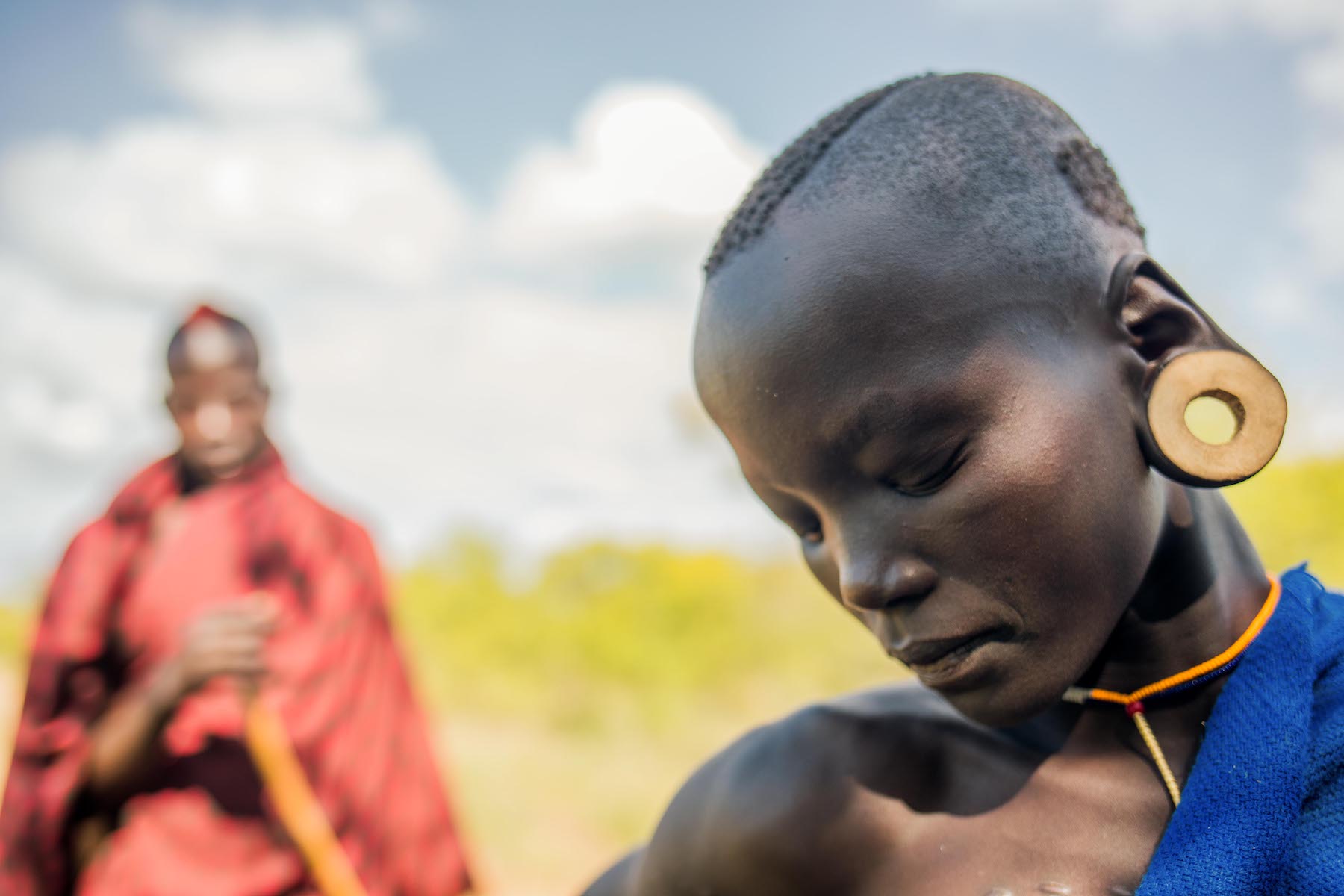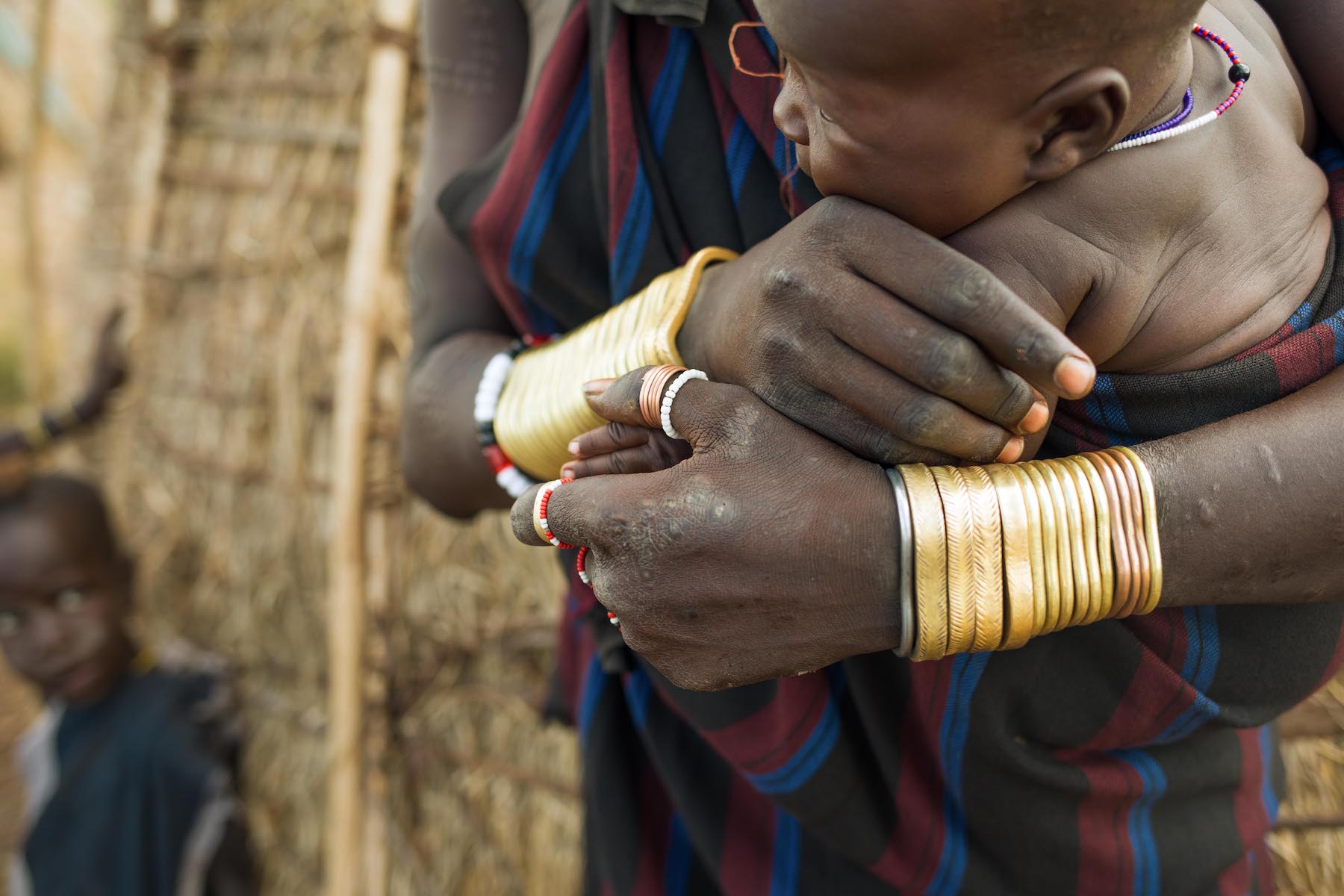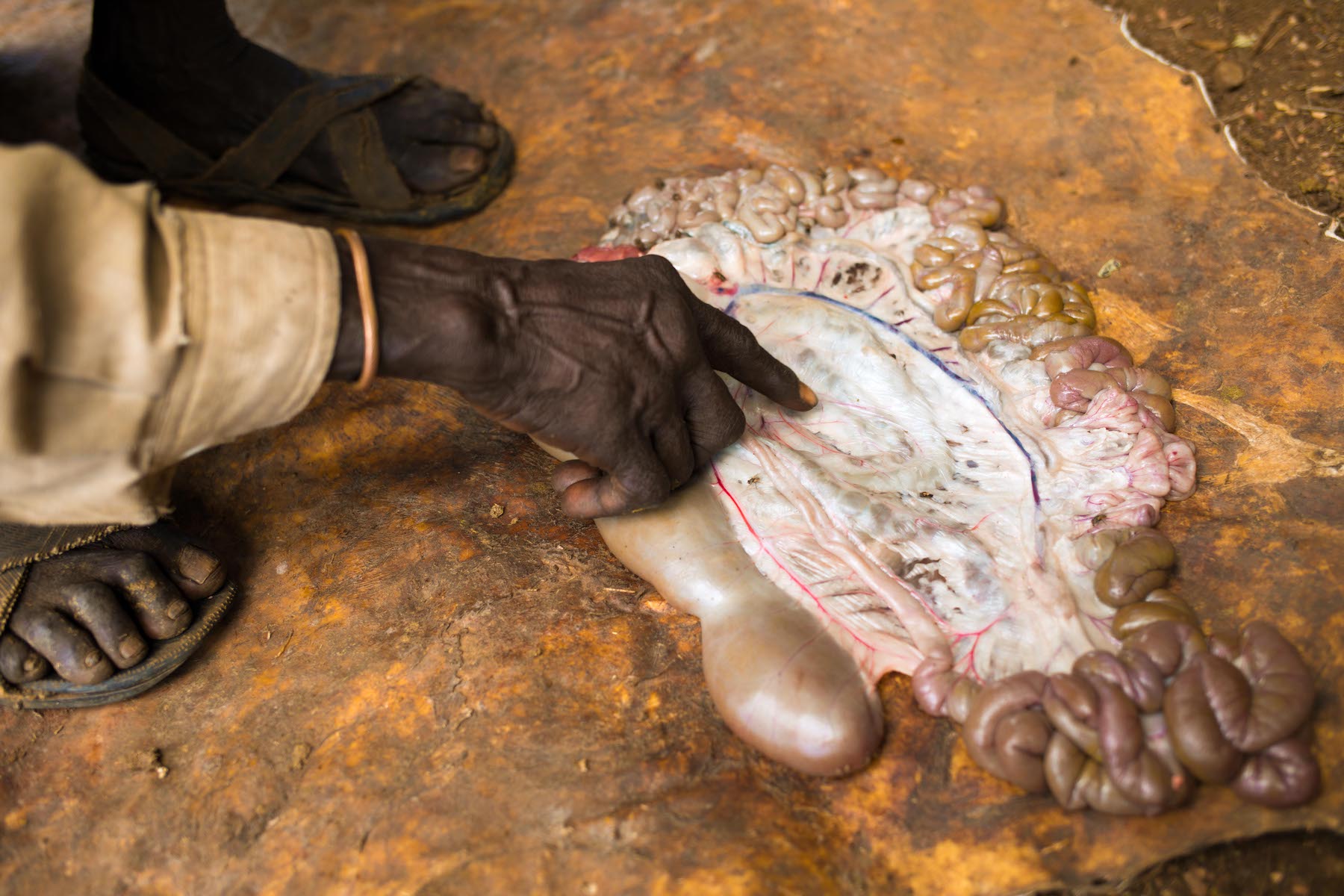OMO VALLEY, Ethiopia — One night, in his village of 20 grass huts in Ethiopia’s Omo Valley, Golonkiwo had a nightmare. As a komoru, or mystic of the Mursi tribe, Golonkiwo’s duty is to receive and interpret dream prophecies. It is a vital role, passed down from father to son in one of the world’s oldest surviving cultures.
“In my dream, I saw the government soldiers coming for us,” Golonkiwo stated. “They killed a lot of people.”
At that time, last October, rumors were already circulating in the villages about a massacre of nearby Bodi tribesmen. Government soldiers had come to disarm the Bodi, and the Bodi had fought back. “The crocodiles are still eating corpses,” a Mursi witness reported, after having seen security forces chase the Bodi into local rivers.
After Golonkiwo’s dream, several komorena had sprinkled cow’s milk on the roads to prevent, by divine magic, a similar tragedy befalling the Mursi. The komorena maintain that it worked: the government changed its tactics.
Instead of an assault, invitations came. The Mursi say the government had prepared a meeting, requesting the attendance of approximately 220 high-ranking tribesmen. When the men arrived, however, there was no meeting. The Mursi men were imprisoned in a compound, under ransom. The price of their release was set at 9,000 guns, to be extracted from a population of 7,000-11,500 Mursi.
It was at this time last autumn that I received a letter from an American friend, an anthropologist who has lived among the Mursi for 15 years. My friend, who asked to use the pseudonym Jonathan, was intrigued by accounts of a fiercely independent tribe that has almost entirely resisted incursions by Christian mercenaries. At approximately 2,500 square miles, or about the size of Delaware, the wild region where they live has remained virtually intact until recently. Jonathan had come, initially, on foot, with nothing, so as to better integrate with the tribe. Years later, after mastering the language, he ended up marrying the daughter of a chief.
In 2005, when Jonathan first arrived in Mursi-land, the tribe was still essentially living as they had for thousands of years. The Mursi had been dependent on the floodwaters of the Omo River to irrigate and fertilize their crops, supplemented by cattle and goat herding, as well as hunting.

Everything changed in 2015 when a government-backed Italian firm completed the Gibe III hydroelectric dam upriver. All seasonal flooding ceased for the first time in millennia, according to the Mursi, rendering vast tracts of tribal land unfarmable. Famine ensued. Simultaneously, water was diverted for a government scheme to establish industrial sugarcane plantations throughout the Omo Valley. The new irrigation features soon became breeding grounds for malarial mosquitoes.
Foreign workers have brought illnesses of their own, including HIV for the first time, into the once-isolated region. As the coronavirus pandemic intensifies, and Ethiopia has enforced few precautions, it seems inevitable that the virus will impact the tribes as well. The total number of deaths from illness has been difficult to establish due to the nomadic lifestyle of these tribal people, as well as a strong local taboo against naming the dead. The tribespeople, however, insist that the deaths have been “many.”
In Addis Ababa, the nation’s capitol, these consequences have been viewed as necessary sacrifices to progress. Inaugurating the project in January of 2011, then-Prime Minister Meles Zenawi promised that “even though this area is known as backward in terms of civilization, it will become an example of rapid development.”
The catastrophic effects of the dam were foreseen in a 2011 United Nations report, in which the U.N. World Heritage Committee called upon the Ethiopian government to “immediately halt all construction” and for “all financial institutions supporting the Gibe III dam to put on hold their financial support.” Salini Impreglio, the firm that constructed the dam refuted their detractors, stating that “The campaign against the construction of the Gibe plant in Ethiopia is merely another initiative without a technical and scientific basis.”
Still, many lenders, including the World Bank, African Development Bank, and European Investment Bank, all refused to fund the dam. Undeterred, the Ethiopian government turned eastward, securing funding from the China Development Bank, China Exim Bank, and the Industrial and Commercial Bank of China.
“If they knew I talked to you, they would slit my throat.”
Once this initial funding had been established, the World Bank finally agreed to indirectly finance the project by providing $684 million toward the construction of power lines to export electricity from the dam to neighboring Kenya.
Since its initial investment in Gibe III, China’s presence in Ethiopia has expanded exponentially. As the African nation’s own government website boasts, “Ethiopia attracted foreign investment of $1.2 billion in the first six months of the 2016-17 fiscal year, dominated by Chinese companies.”
The Chinese have built infrastructure including highways, bridges, waterworks, and telecommunications throughout the country, as part of its extensive Belt and Road initiative. While the Chinese have promoted this program as an expansion of the ancient “Silk Road” that once spanned Asia, it has been criticized by rival governments as a form of modern colonialism.
In addition to government funding by the Asian superpower, Chinese corporations have also established a strong presence here. In the wake of domestic corruption scandals, sugar plantations that were originally run by the Ethiopian military have been bought out by Chinese businesses, which have also received permission to build additional facilities in the Omo Valley. A 2017 article in the state-run China Daily titled “Life is sweet for sugar industry in Ethiopia” referred to 10 such plants being under construction at the time, on what it called “barren” land. In each case, territory had been forcibly seized from local tribes by the Ethiopian military without compensation.

Sugar produced by these Chinese conglomerates is already being consumed around the globe. Some Western brands, like Coca-Cola and Pepsi, have pledged to source ingredients only from farms that respect indigenous land rights. The United States, as the world’s largest consumer of sugar and Ethiopia’s third largest export destination, likely receives much of it through direct import and in products like breakfast cereal and soda pop.
As the plantations and sugar refineries multiply, local tribespeople have increasingly been fighting back, staging raids against both machinery and workers. The presence of foreign investment has increased pressure on the Ethiopian government to stabilize the region, which has led to the ongoing military initiative to confiscate all tribal firearms.
Since Prime Minister Abiy Ahmed’s inauguration in 2018, the politician has increasingly pursued legislation to restrict gun ownership nationwide. Until recently, the army has largely attempted to seize these weapons by force. The soldiers have effectively employed battle tactics taught to them by trainers in the United States military. These trainers were instrumental, post-9/11, in modernizing the Ethiopian National Defense Force as it fought domestic Islamic terrorists. Since 1951, the U.S. has provided nearly $15 billion worth of aid to the African nation.
Despite the continuation of strong U.S. backing, a series of tribal massacres by Ethiopian forces over the past two years seems to have influenced recent Nobel Peace Prize laureate Ahmed to modify his government’s disarmament strategy.
“They said, ‘We are going to kill you. You are going to die.’ We believed them. We even wished they would slit our throats.”
When Jonathan first wrote to me, his close friend Olishwai had already been in detention for a month. Jonathan requested that I report on the situation in person. By the time I was able to come, two months later, Olishwai had just been released. I was able to speak with the Mursi elder in a derelict hotel in Addis Ababa. He had traded in his tribal robe for a T-shirt and trousers, and was now in hiding. Olishwai, like everyone quoted in this piece, requested to be identified by a pseudonym due to fear of retaliation.
“If they knew I talked to you, they would slit my throat,” Olishwai warned. The chief was in his late 40s or early 50s, he estimated. No one keeps track of births in Mursi-land. “If you want to know about time,” Olishwai noted, “you can look at the sun.”
I asked about the detention compound in Romo where Olishwai had been held for “three moons.”
“The local police forces, the federal police, and also the defense forces were there,” Olishwai testified. “They said, ‘We are going to kill you. You are going to die.’ We believed them. We even wished they would slit our throats, but our komoru said, ‘No, you must survive. Give them your guns. Later, you can get more.’ They put ropes around people’s necks and hung them up. They tied their feet together and hung them upside down, and beat their ribs and thighs. They tied rope around the testicles of the men and they tightened that rope.”
Other detainees described inmates being forced at gunpoint to drink urine, and of soldiers destroying the magic-bestowing bracelets of several komoru and of shaving their long, sacred hair.
In addition to the firearms, mostly AK-47s, the government officials also demanded cattle to feed their troops, and the surrender of all “Mursi criminals” for incarceration in the capitol, Olishwai said
Most of the criminals, Olishwai explained, were young men who had fought the encroachment of factories and sugar plantations onto Mursi land. Some were wanted for throwing rocks at passing cars, and some had killed factory or farm workers in ambushes.
“We tell the young men not to do it, but they continue,” Olishwai lamented. “They won’t listen to us because they are drinking a lot of alcohol. When they are drunk, they do these kinds of things. The highlanders are bringing alcohol into the tourist areas, and they are getting drunk on it.”
The Ministry of Defense, the Ministry of Culture and Tourism, as well as the federal and local police did not respond to questions about the allegations of detainment, torture, and theft, or the rumors that Bodi tribespeople were massacred before the Mursi’s alleged kidnapping.

Under intense pressure, Olishwai and other Mursi elders agreed to surrender enough firearms to satisfy the government for now, although they have retained as many firearms as could be concealed from enforcement agents. Most individuals labeled as “Mursi criminals” by the government have been handed over, although some remain in hiding. Cattle and goats used to feed federal troops have also been forfeited in significant numbers by the tribespeople under duress and without compensation.
Since the loss of their firearms, Olishwai claims, the Mursi’s agro-pastoral way of life is threatened. For the Mursi, a firearm is considered a necessary mark of manhood, a belief that has led to the mass accumulation of guns in the region. “Now, we can’t watch our cattle,” Olishwai insisted. “When the hyenas come, we can’t do anything about it. We have become women. These hyenas come, and the only way we can scare them off is to point a flashlight at them. The government gives us nothing.”
One unintended effect of the confiscation has been a significant decrease in intertribal warfare. For generations, raiding has persisted between the Mursi and adjacent groups like the Bodi, Kara, and Kwegu. Now, disarmed warriors cite fears of becoming victims to raiders from the last armed clans.
Olishwai invited me to travel to his village and interview his people about their ongoing struggle. He specifically wanted me to see the bruising on their bodies. As the government severely restricts journalists and forbids their access to the Omo Valley, I had to travel undercover.
Jonathan scribbled out the instructions along with a crude map. There would be a series of Mursi guides along the way, each with the knowledge necessary to navigate a specific segment of the journey.
“Friday morning, start to Mursi early,” the instructions began. “Meet your translator Bungairege in Bele, just after a bridge over a small river at a second dry river right after it.”
The final leg of our long trek was a two-hour hike through the wilderness to a small cluster of grass huts on a hill. Olishwai’s wives Najoney and Nagurush greeted us, smiling behind their lip plates. They offered ears of corn from the fire and cups of fresh goat’s milk, still warm from the teat.
That night, the Milky Way galaxy unfurled overhead to the delicate melody of cowbells and the throbbing hum of insects. Through a clearing, beyond the reach of the silhouetted savannah, I could see electric lights, an alien landscape of sugar plantations stretching to the horizon. In the midst of it was a massive sugar refinery, the reservoir of the Gibe III Dam, and the camp in Romo where the Mursi had been imprisoned.
The following morning, as the flies buzzed relentlessly around our heads, the men came one by one to testify about their experiences in Romo. It was the first of several meetings with survivors in multiple locations. Some showed up with banned AKs slung over their shoulders. Several of the Mursi were eager to pull aside their robes to show marks from the prison camp. I saw bruises and scarring on ribs, legs, arms, and heads.
The last man to arrive was a komoru named Olinebi, one of the most important Mursi, I was told. He spoke about his people’s beliefs — how the spirits of new infants come from the moon, and how when the Mursi die, they travel west to the land of the setting sun. Olinebi pointed off in the direction of the nearest sugar factory. If a living man were to walk far enough in that direction, he would eventually hear the singing of the dead.
That evening, the old komoru ordered a goat to be slaughtered and butchered. The intestines were brought to him in a bundle. Olinebi spread the membrane on the dusty ground and caressed it with his fingers. He performed the same divination as his father had, and his father before him.
The chief pointed to a minor network of blue veins at one edge of the glistening organ. “These are the nations of the world.” Next, he pointed to the expansive pearlescent center of the membrane. “This is Mursi-land,” he stated. Finally, he pointed to a bright red artery leading away from it. “This is the life of the Mursi people,” he concluded with a flourish of his lined and calloused hand. “As you can see, it is a very, very long line. It can only mean that the Mursi will endure forever.”

Cover: A Mursi warrior with an illegal AK-47 looks at a factory in the distance on former tribal land. Photo: Roc Morin/VICE News.
from VICE https://ift.tt/3duEr5E
via cheap web hosting
No comments:
Post a Comment